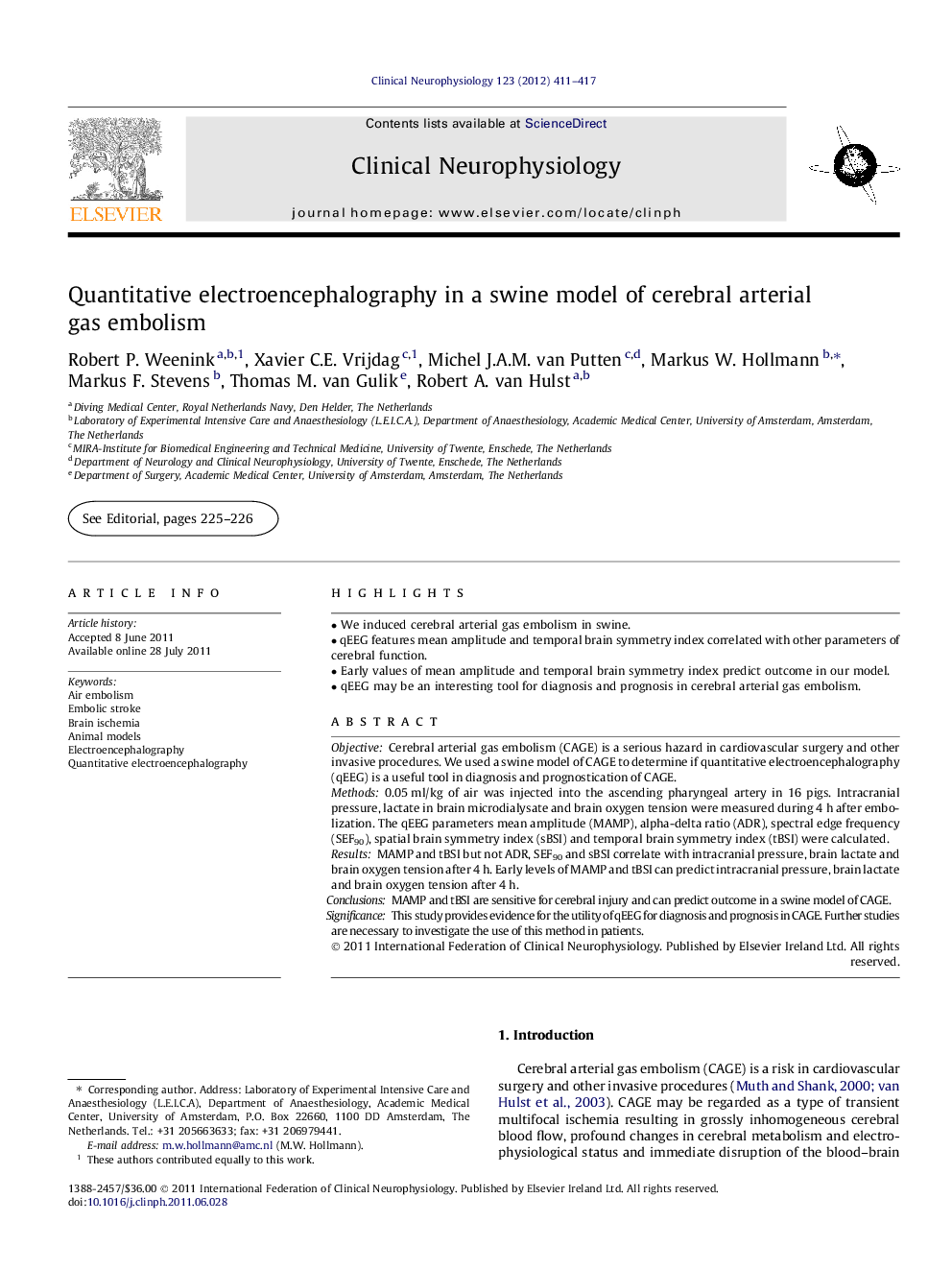| Article ID | Journal | Published Year | Pages | File Type |
|---|---|---|---|---|
| 3045643 | Clinical Neurophysiology | 2012 | 7 Pages |
ObjectiveCerebral arterial gas embolism (CAGE) is a serious hazard in cardiovascular surgery and other invasive procedures. We used a swine model of CAGE to determine if quantitative electroencephalography (qEEG) is a useful tool in diagnosis and prognostication of CAGE.Methods0.05 ml/kg of air was injected into the ascending pharyngeal artery in 16 pigs. Intracranial pressure, lactate in brain microdialysate and brain oxygen tension were measured during 4 h after embolization. The qEEG parameters mean amplitude (MAMP), alpha-delta ratio (ADR), spectral edge frequency (SEF90), spatial brain symmetry index (sBSI) and temporal brain symmetry index (tBSI) were calculated.ResultsMAMP and tBSI but not ADR, SEF90 and sBSI correlate with intracranial pressure, brain lactate and brain oxygen tension after 4 h. Early levels of MAMP and tBSI can predict intracranial pressure, brain lactate and brain oxygen tension after 4 h.ConclusionsMAMP and tBSI are sensitive for cerebral injury and can predict outcome in a swine model of CAGE.SignificanceThis study provides evidence for the utility of qEEG for diagnosis and prognosis in CAGE. Further studies are necessary to investigate the use of this method in patients.
